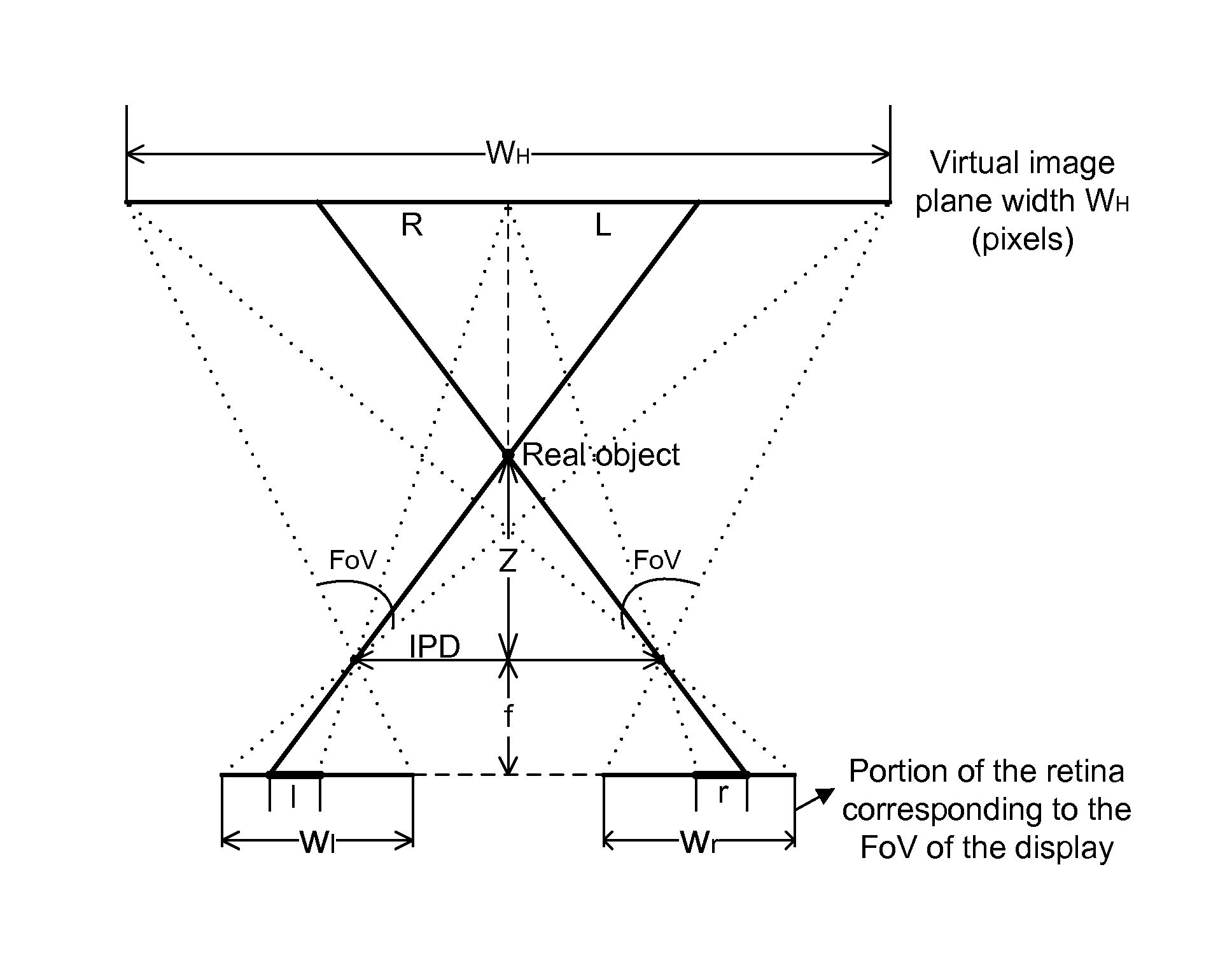Range Calibration of a Binocular Optical Augmented Reality System
a technology of augmented reality and binoculars, applied in the field of binocular optical seethrough augmented reality display calibration, can solve the problems of limited 3d capabilities, limited augmented reality support, and limitations of existing portable computing devices when it comes to enabling augmented reality applications
- Summary
- Abstract
- Description
- Claims
- Application Information
AI Technical Summary
Benefits of technology
Problems solved by technology
Method used
Image
Examples
second embodiment
[0021]The human interface module 102 is in general a wearable device that permits a scene adapted overlay of virtual information on the real world objects. Regardless of the specific embodiment, reference to the terms “overlay,”“overlays” or “overlaid” refers to scene adapted overlay. In the embodiment of the present disclosure, the image delivery and display mechanism “overlays” information related to the user on a field of view or retrieved information is “overlaid” over a field of view. In other words, the user is able to see the real world that is not blocked by the overlay. In the preferred embodiment, the image delivery and display mechanism is a see-through medium through which the real world can be seen by the eyes of the user and on which virtual objects can be displayed overlaid on top of or next to real objects. For example, this overlay may be achieved with the image delivery and display mechanism projecting information into the eye so that the projected information can ...
first embodiment
[0064]In the joint 3D calibration procedure, the calibration engine 205 first performs depth-disparity calibration by determining a depth disparity. The calibration engine 205 then uses the mapped disparity from the depth-disparity calibration to render the virtual target at the right depth. The calibration engine 205 then receives user input to move the virtual object on the display to align the 2D pixel position of the virtual object on the display with the real-world object. In one embodiment, the calibration engine 205 determines whether the calibration is complete (e.g., the user sees that the virtual object is aligned in depth and position with the real-world object). If the calibration is complete the disparity value is stored or recorded along with the depth. As noted above, the calibration can be determined as completed by the calibration application 103 or based on input from the user. If the calibration is determined incomplete, the calibration engine 205 continues to rec...
PUM
 Login to View More
Login to View More Abstract
Description
Claims
Application Information
 Login to View More
Login to View More - R&D
- Intellectual Property
- Life Sciences
- Materials
- Tech Scout
- Unparalleled Data Quality
- Higher Quality Content
- 60% Fewer Hallucinations
Browse by: Latest US Patents, China's latest patents, Technical Efficacy Thesaurus, Application Domain, Technology Topic, Popular Technical Reports.
© 2025 PatSnap. All rights reserved.Legal|Privacy policy|Modern Slavery Act Transparency Statement|Sitemap|About US| Contact US: help@patsnap.com



